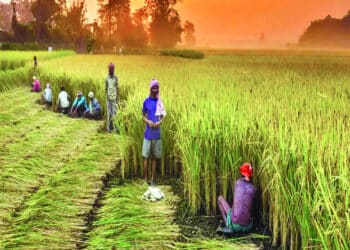A cropping pattern is a dynamic concept that changes through time and space. For example, in India, the plurality of cropping systems is the main feature of Indian agriculture, which may be linked to the rainfed nature of agriculture and the prevailing socio-economic conditions.
Traditions, expected profit, personal preferences, and available resources all play a part in cropping patterns. One of the most distinguishing characteristics of Indian agriculture is the diversity of cropping systems, which may be linked to rain-fed agriculture and the socioeconomic conditions of the farming population.
Cropping systems in a region are mostly determined by a number of soils and climatic variables that determine the overall agro-ecological environment for nutrition and the suitability of a crop or group of crops for production.

Nonetheless, prospective productivity and monetary rewards serve as guiding ideas for farmers when selecting a crop or cropping system.
Even among the food crops, rice is the most important crop and is the staple food of people living in the southern part of the country, while wheat is the second most important crop and is grown primarily in the north-western part of the country.
Nearly 83 percent of India’s total cultivable land was planted with food crops at the turn of the century, with the remaining 17 percent planted with non-food crops.

However, in 1944-45, India’s cropping pattern changed, with the area under food crops falling to 80% and the area under non-food crops marginally increasing to 20%. Increases in the prices of non-food grains or cash crops mostly caused these shifts in planting patterns.
In India, there have been numerous changes in cropping patterns since independence. Wheat has seen the highest rise in the area among all food crops from 1950-51, with a 132 percent increase in cultivation by 1987-88. However, the rise in the area for both rice and pulses has been limited to only 23%, while coarse cereals have only seen a minor increase of 1% by 1987-88.

However, the area under cultivation of classic commercial crops such as cotton, oilseeds, jute, sugarcane, potato, and others increased slightly.
The data of Comparative study shows that the proportion of land under cultivation divided between food and non-food crops has shifted from 74:26 in 1950-51 to 80:20 in 1980-81, then reversed to 77:23 in 1990-91, and ultimately to 73:27 in 2013-2014.

As a result, there has been a clear change in the country’s cropland from non-food to food crops in recent years.
The scenario happened For two main reasons: first, food crop prices have been rising at an alarming rate; and second, food crop production has become extremely profitable and productive in recent years as a result of the introduction of new technologies in Indian agriculture.
Also Read: The Era Of Farm Automation
Source: TheAgrotechDaily
















